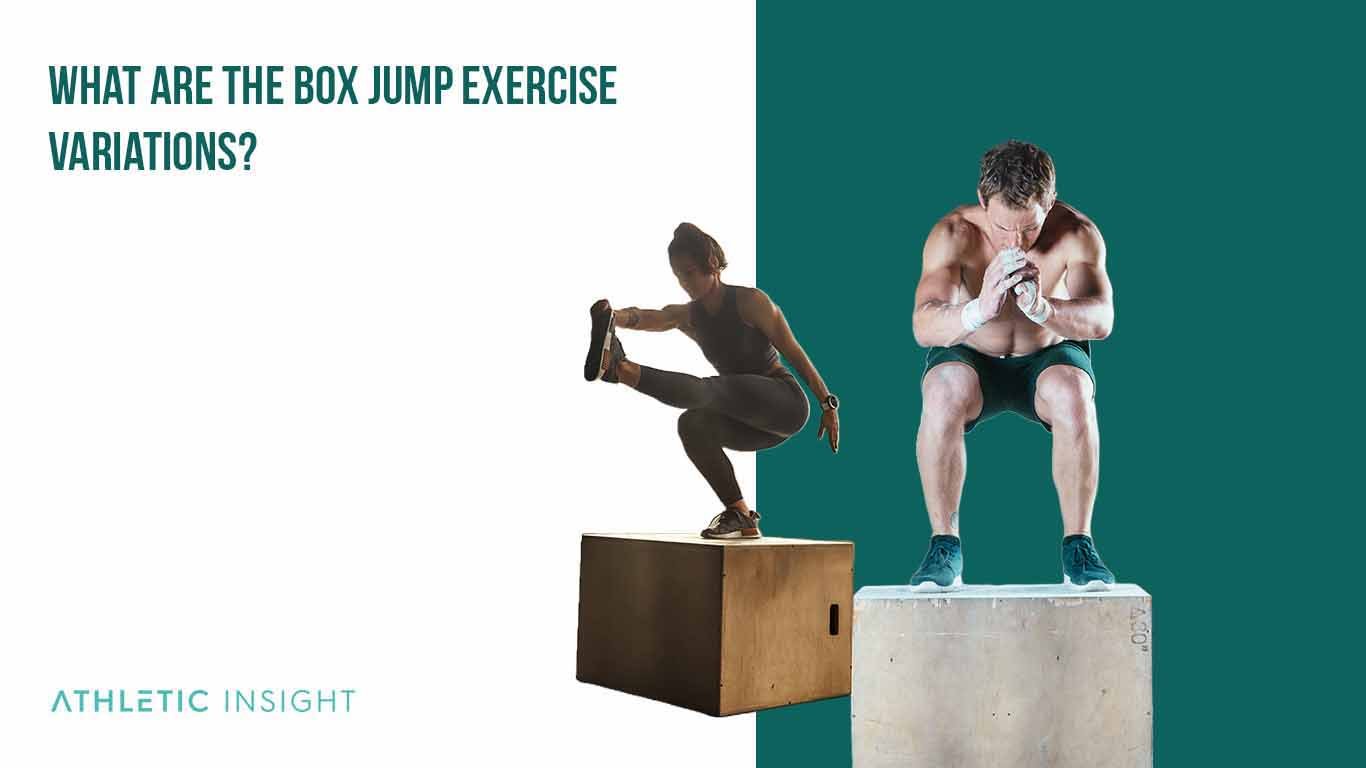The box jump exercise is a plyometric movement that involves an individual jumping from a level surface onto an elevated surface, such as a box. Athletes and weightlifters typically use this high-impact exercise.
The benefits of a box jump include; increasing your endurance, building leg strength, boosting full-body coordination, taxing your core muscles, and improving cardiovascular endurance.
How to Perform Box Jump with Proper Form?
Proper form is the ability of a person to perform an exercise correctly without the risk of being injured or hurting themselves during the training. Knowing the correct form can help mitigate risk (i.e., using a box jump substitute). Furthermore, individuals new to box jumps should learn how to treat a box jump injury before getting started to be ready just in case.
To dominate the box jump exercise, you need to learn the correct box jump height and how to box jump before getting started.
People performing a plyo box jump should keep the following steps in mind to achieve proper form.
- Choose the correct height for your skill level
- Stand facing the box
- Keep your feet hip-distance apart
- Bend your knees to begin in an athletic stance
- Bend your knees as you press your hips back
- As you press your hips back, move your arms behind you at the same time
- Push through the bottom of your feet to jump into the air
- Swing your arms forward as you take off the ground
- Extend and straighten your knees and hips to get enough height over the box
- Land with both feet on top of the box with your toes facing forward
- Step off the box and repeat
What are the Benefits of Box Jump Exercise?
The benefits of an exercise include why this exercise is more beneficial than other alternatives. For example, box jump training could be best for athletes and work better than other jumping exercises.

There are many box jump benefits of using a fitness jumping box for the following.
- Increases your endurance
- Boosts cardiovascular capabilities
- Taxing the central nervous system
- Increases explosive power
- Develop lower-body strength
- Develop full-body coordination
- Improve vertical jump height
What are the Mistakes for Box Jump Form?
Performing a box jump with good form can help prevent injuries, reap the benefits of the exercise, and help the individual progress after going through a box jump exercise plan. There are some mistakes to keep an eye out for regarding the correct box jump form.
First, you need to avoid placing their feet too close together during the start of the motion. Putting your feet too close together can lead to an unstable base that could cause the person not to get the right power during take-off.
Second, the individual performing the excersie must ensure their arms are behind their bodies as they bend their legs to help with power build-up in their quads and hamstrings. Their arms, including their shoulders, must be engaged during the movement.
Third, you must land with a slight bend in their knees and use their quadriceps, hamstrings, and calves to stand up at the end of the movement.
Using a gym jump box means people must learn about box jump exercise form before starting their workout. Those who wish to achieve good box jump exercise form must learn how to do box jumps before going through the exercise. If a person cannot safely perform a box jump, they should look into an alternative to box jumps at home.
The common form mistakes involved with box jumps refer to not loading enough power in the quadriceps and hamstrings, not using the deltoids and shoulder muscles to counteract the jump, and not landing softly with the calf muscles.
Which Muscles are involved while performing the Box Jump Exercise?
There are numerous muscles involved in the box jump exercise. The main muscles taxed during the box jump exercise includes the quadriceps, hamstrings, core, abdominals, and deltoids.
The box jump exercise builds quadriceps muscles to help with squats, jumping power, and athletic movements. Using a squat to box jump can help athletes build strength in their quads for lower body sports.
The box jump exercise helps build power and strength in the hamstrings during the jumping movement of the exercise. Using a fitness jumping box helps the quick-twitch muscle fibers in the hamstrings for jumping, sprinting, and athletic movements.
A box jump also helps the calf muscles. For example, the double box jump strengthens the calves’ elasticity and helps with sprinting and power.
Performing a box jump can also help individuals with their upper body coordination and deltoid muscles. For example, a volleyball box jump helps athletes with their shoulder strength and coordination during the jumping movement.
Those new to doing plyometrics should look into a box jump workout for beginners that simultaneously taxes the upper and lower body. Using a box jump workout routine can help build a person’s calves, quadriceps, hamstrings, core, and deltoid strength.
What are the box jump exercise Variations?
There are numerous box jump exercise variations that will work for people of all skill levels, ages, and abilities. For example, performing box jumps on a bench is good for those who need to land on a soft surface. On the other hand, doing box jumps over 24-inch boxes is suitable for plyometric athletes, such as track and field runners.

One of the most common box jump exercise variations is the burpee box jump for CrossFit. This exercise appears in daily programs for Crossfit gyms. Another variation used in Crossfit is the box jump over during high-intensity workouts, like an AMRAP and box jump WOD.
Other variations can be used in a boxing jump rope workout for those who need fast feet and power. Boxers can use the burpee box jump over to help with explosiveness and full-body power. Box jump overs are also suitable for boxers who need to build their endurance. Learning how to jump rope like a boxer and jump higher is good for speed, strength, and two-leg power.
Another box jump alternative good for beginners is the seated box jump. This exercise is a smart option for those new to plyometrics and with limited box jump equipment. By starting in a seated position, people can slowly build up their strength to achieve a powerful jump box after a few weeks.
What Is the Necessary Equipment for Box Jump?
In order to perform a box jump, the only equipment needed is a plyo box that is sturdy, capable of holding one’s weight and high enough to perform the exercise. An optional piece of equipment that can be used to further increase leg strength includes adding weights such as dumbbells.

- Plyo Box
- Weights (optional)
There are different options for a box jump for your workout. You can look into how to make your own CrossFit box jump by reading a box jump diagram. Those new to plyometrics should analyze how to build the best mini jump box, whereas more experienced athletes can look at plans for a CrossFit box jump.
Box jumps in gyms, and CrossFit gyms are typically padded or wooden boxes. Most commonly, people will start with the average box jump height, such as a 10” or 12” box jump. As they become more comfortable with this height, they will move up to other boxes, such as 16” or 24-inch box jumps.
If you do not belong to a gym, you can look into making a CrossFit box jump. If you’re wondering “what can I use for box jumps”, you can typically find success with wooden boxes or benches. If you do not feel comfortable building your equipment, you can look at foam box jumps for sale.
Looking at common box jump plans can help you determine what you may need or what products to purchase. Some common equipment choices for this exercise include a jump box from Walmart, rogue box jump, or a padded box jump alternative.
What are the Leg Muscle Exercises with Box Jump?
There are various leg muscle exercises that can help you perform the box jump. Furthermore, the box jump exercise for abs can help you build core and coordination.
Those who want strong legs, and to build a solid core, should include the box jump exercise within their leg workout program. An example of a workout program that can work for building legs and abs is as follows.
- Leg Exercises: Plyo Box Jump, Squat, Deadlift, One Leg Box Jumps, Glute Bridge
- Core Exercises: Box jump exercise, Plank, Crunches, Sit-Ups
- Arm Exercises: Shoulder Raises, Bench Press, Overhead Press, Bent Over Row
What are the Box Jump Related Facts?
These are the specific facts related to the effectiveness of box jumps.
- People can do weighted box jumps with a dumbbell, barbell on their back, or a kettlebell
- A foam box jump can help reduce box jump injuries
- The world record box jump for the highest box jump from a standing position is 67 inches
- A box jump helps with full-body coordination and power
- The box jump exercise works the upper and lower body through countermovement
Does Box Jump affect the hormones?
Yes, the box jump affects hormones. More specifically, these hormones include testosterone and the thyroid.
Box jumps increase testosterone because it is building muscle and taxing the central nervous system. Box jumps help regulate thyroid hormones by improving blood flow and opening hormone receptors. Box jumps also increase dopamine since exercise helps boost mood.
Box jumps also increase human growth hormone and testosterone, both of which are used for muscle growth and power. High-intensity exercises, like box jumps, help boost the production of HGH during and after the workout.
Do Box Jump increase testosterone?
Yes, the box jump increases testosterone by taxing the body through resistance exercise and high-intensity exercise. While most exercises increase testosterone, the box jump has more of an impact than most.
Does the Box Jump affect mood?
Yes, the box jump boosts your mood during and after your box jump workout by increasing dopamine production in your brain. How many box jumps should I do? The number depends on the specific workout program you are following, but regardless, exercise can help increase dopamine during and after your gym session.
Is the Box Jump practiced within CrossFit?
Yes, the box jump is practiced within Crossfit. In fact, it is a common exercise used within competition and daily WOD programs.
For example, professionals use box jump overs Crossfit during competition and high-intensity workouts. Compared to the average box jump, these athletes use a tall box jump Crossfit during competition, with women jumping above 24” and men jumping over 30-inch box jumps. Sometimes, these athletes use Crossfit shin guards for box jumps to protect their skin and muscles if they would fall during the exercise.
Is Box Jump an Olympic lift?
No, a box jump is not an Olympic lift. However, the box jump exercise uses fast-twitch muscle fibers and plyometrics conducive to Olympic lifting. Olympic lighting requires full-body coordination, lower-leg strength, power, upper-body strength, core stabilization, and quickness. A box jump requires the same attributes and can help Olympic lifters with compound movements.
Is Box Jump a compound exercise?
Yes, the box jump is a compound exercise. A compound movement is an exercise that uses multiple muscles and joints. The box jump requires full-body coordination and uses the leg muscles (specifically the quadriceps, hamstring, and calves) in tandem with the shoulder muscles and arm-swing coordination.
What are the Box Jump Alternatives?
A box jump alternative is another form of the original exercise suitable for athletes who may not be able to do the original due to several reasons (i.e., improper form, injury, fear, etc.).
- Superman Exercise: The superman exercise is a prone exercise that is easy for beginners to do with no equipment as a box jump alternative. The main feature of this exercise is to strengthen the lower back and shoulders by elongating the body.
- In And Out Abs: This exercise taxes the upper and lower abs by working the person’s balance and coordination and is a box jump alternative. The feature of this ab exercise is to maintain balance on the sit bones.
- Plank: This exercise is a box jump alternative as it is a stationary exercise that works the core, quadriceps, and shoulders. The main feature is to keep your body in a straight line by tightening your core and avoiding your hips sagging.
- Bird Dog: A bird dog works the upper and lower body coordination and core strength as a box jump alternative. The manufacturer of this exercise is to elongate the arm and leg simultaneously.
- Leg Raises: Leg raises are a box jump variation as they isolate the lower abs for more core strength. The main features include keeping your lower back on the ground and bracing your core.
- Side Plank: This is a box jump alternative as it is a stationary movement that mainly works the upper abs and obliques. The features include keeping your body in a straight line under your shoulder.
- Russian Twist: A Russian twist is a box jump alternative since it works the obliques and balance. The main features include staying balanced and avoiding curling your upper back.
- U Crunches: U crunches are a box jump alternative, mainly focusing on the upper and lower abs. The main features include touching your toes and keeping your arms straight.
- Oblique Crunches: Oblique crunches isolate the obliques as a box jump. This exercise focuses on small movements to isolate the side abdominals.
- Warrior Pose 3: Warrior Pose 3 is a box jump alternative yoga pose that helps strengthen and stretch the upper and lower body. This low-impact exercise focuses on elongation.
- Burpee: The burpee is a box jump alternative that enhances a person’s cardiovascular condition. This exercise focuses on a full-body cardio movement.
- Ab Crunches: Ab crunches are a box jump alternative that isolates the upper abs. This exercise focuses on small movements that work the upper abdominals.
- Scorpion: The scorpion is a box jump alternative that stretches the hip flexors. This exercise focuses on stretching and mobility instead of core strength.
- Bicycle Crunches: Bicycle crunches are a box jump alternative that works upper and lower body coordination. This exercise works the quadriceps and the obliques.
- Downward Dog: Downward dog is a stationary exercise that is an alternative to the box jump for beginners. This exercise strengthens the hamstrings and calves.
- Windmill: The windmill is a stationary stretching exercise that is a beginner box jump alternative. This exercise helps elongate the upper and lower limbs through rotation.
- Reverse Crunches: Reverse crunches are a box jump alternative that isolates the lower abs. This exercise focuses on keeping the legs straight and lower back fat.
- Child Pose: Child pose is a beginner box jump alternative that helps stretch the hip flexors. This exercise is a beginner option for those who want to work on their mobility before doing a box jump.



